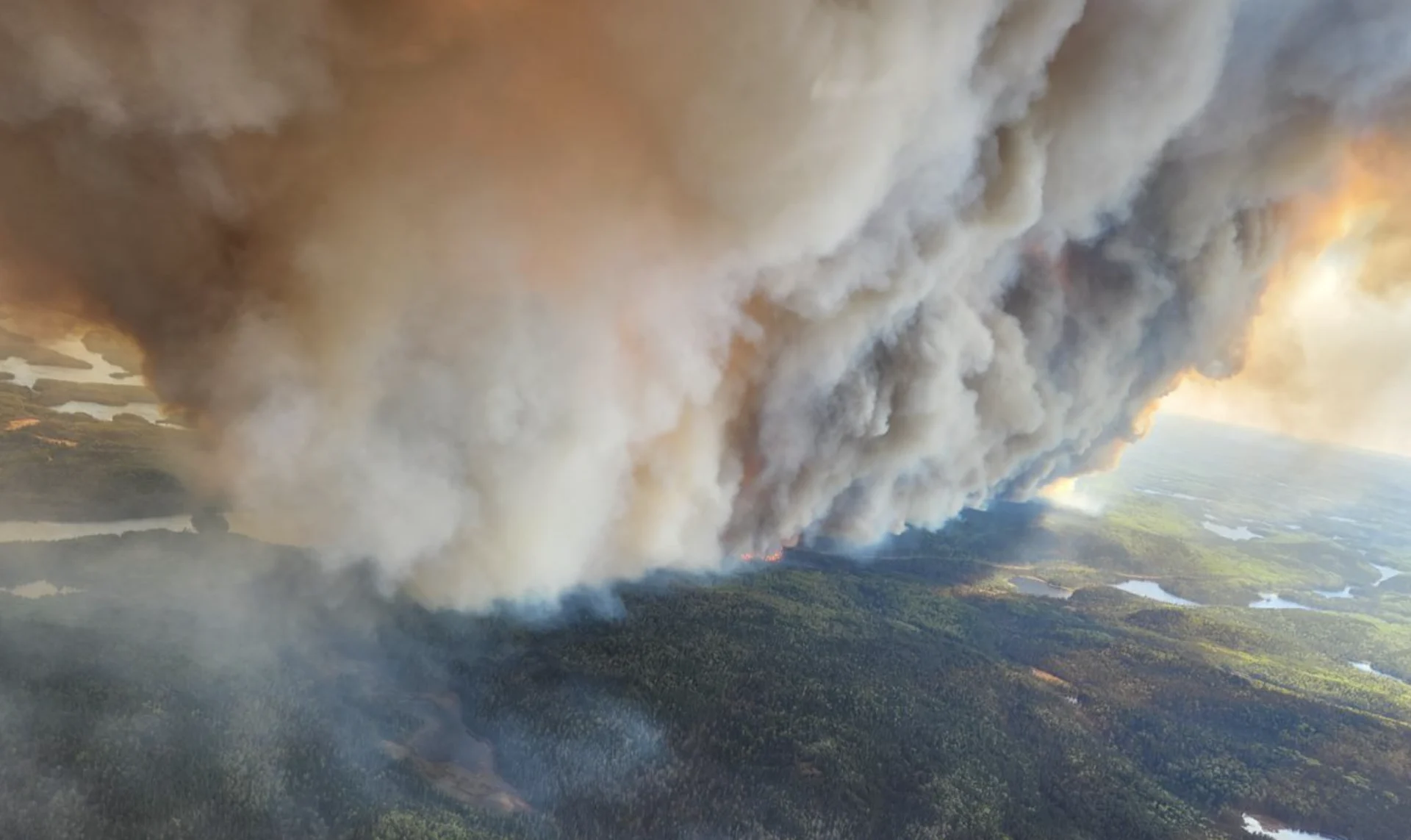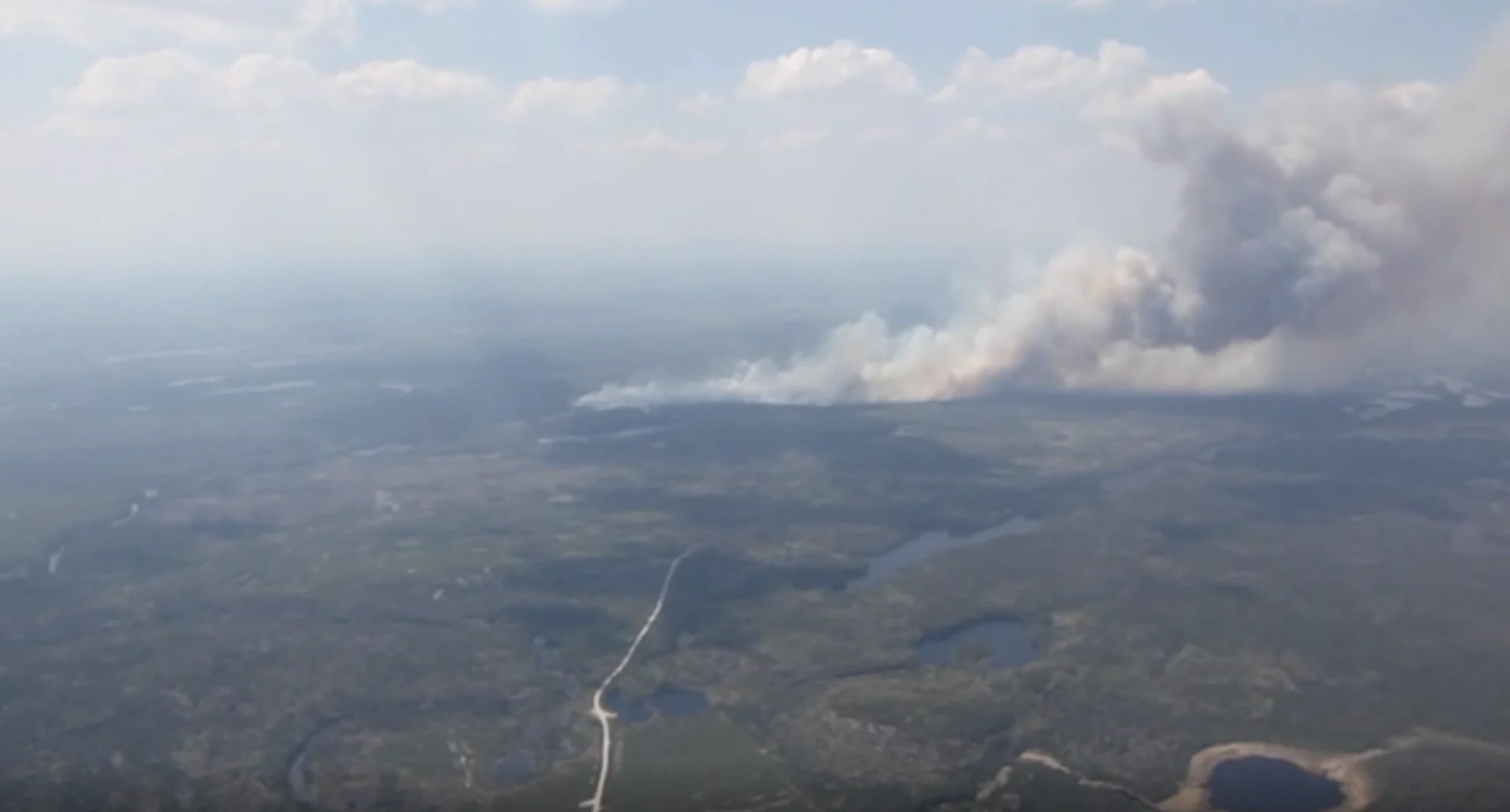
In the wake of wildfires, forests’ ability to trap carbon ‘goes up in smoke’
It’s still early in the summer, but 2023 is already poised to be the worst wildfire year in recent memory. As of June 5, wildfires in Canada have claimed 3.3 million hectares of land, including 2.2 million hectares of managed forest land, according to Werner Kurz, a senior research scientist with the Canadian Forest Service.
“People sometimes say, ‘Is this the new normal?’ And the answer is unequivocally this is not the new normal … We’re on a trajectory of continuously worsening situations due to climate change,” he told The Weather Network.
“Our emission reduction targets literally go up in smoke as a result of these wildfires.”
But it’s not just the initial rush of emissions from the fires that are cause for concern. As the fires damage or destroy trees, deadwood, and fine organic matter on the forest floor, they also disrupt the ecosystems’ ability to sequester carbon. This isn’t a small amount, as Canada’s boreal forests alone are keeping more than 25 gigatonnes of carbon from the atmosphere.
How forests store CO2
On average, Canada’s managed forests store around 208 tonnes of carbon per hectare, though this varies on forest age, location, and a slew of other factors.
Forests store carbon in various forms. First, trees use and store carbon as they grow. Eventually, trees die, or parts of them fall off, ultimately becoming deadwood. Then there’s smaller, finer pieces of plant matter that cover the forest floor.
The latter two forms store the greenhouse gas, but also end up decaying, and re-releasing it. Often, the smaller pieces will release their carbon faster than, for instance, a large dead tree. Additionally, living trees will die off, becoming deadwood or finer organic matter, though the rate at which these less stable forms of carbon decay varies based on factors such as species.
Wildfire impacts: burning and beyond
Forest fires burn these carbon-storing forms of matter, releasing the greenhouse gases into the air. Or, they kill living trees, causing them to start releasing carbon as they decay.
Forests will regrow after wildfires strike. Boreal forests, for instance, are fire-adapted, and wildfires will cause the trees to release their seeds and cones, leading to new growth.
READ MORE: Peatlands create safe, natural havens from wildfires, but they need protection
However, this regrowth, and the carbon uptake that results, can be impaired in an area if several fires hit it year after year, destroying the seedlings before they have a chance to reproduce, or simply destroying the seeds in the ground, Kurz explained.

Smoke from a wildfire seen near Timmins, Ontario, in 2021. That year, Canada had its worst wildfire season in 30 years, though 2023 is poised to surpass it. (Ontario Ministry of Natural Resources and Forestry)
In other cases, extreme fires have caused a complete loss of organic matter in an area, leaving just rock and lifeless soil. This is a harsh environment for new growth, and other types of plants like shrubs can take over rather than native trees.
The fires may also kill large trees, transitioning them from a more stable store of carbon to one that decays over time such as large deadwood or, for smaller branches, decaying organic matter that sits on the forest floor.
“[T]he decomposition of the dead trees and organic matter left behind after the fire releases more carbon dioxide than the young trees are taking up from the atmosphere,” Kurz said.
WATCH BELOW: What role does climate change truly play in wildfires?
Regrowth is slow, and sometimes ineffective
Also, new tree growth in a burned area may not always be the boon it appears to be. Younger trees do accumulate atmospheric carbon faster than large ones as they mature. But as the saplings get bigger and bigger, there’s more competition between neighboring trees, and some end up dying off and releasing the carbon they accumulated.
Considering these unlucky trees just end up releasing the carbon they took in anyway, it doesn’t really change a burnt forest's net carbon emissions one way or the other, Kurz explained.
While young trees take in more carbon as they grow, they also end up emitting more of it. Saplings take in a lot of sunlight, carbon dioxide from the air and nutrients from their soil during the day to photosynthesize.
But they end up “exhaling” carbon dioxide at night or during the winter when they can’t produce more organic matter due to the cold or lack of sun. Meanwhile, some microorganisms may, at a slower rate, continue to break down the dead plant matter while the new trees aren’t growing.It’s not just forest fires causing an increase in carbon release from forests. For instance, pine beetles pose a threat as well. However, by degrees Canada’s forests are starting to emit more than they sequester. They have “steadily transitioned from a sink to a source,” Kurz said.
Thumbnail Image: The fire Wawa 3 in Ontario was recently re-mapped and is now 5,770 hectares and deemed Not Under Control. It exhibited significant fire behaviour on June 1, 2023. (Ontario Forest Fires / @ONforestfires)











